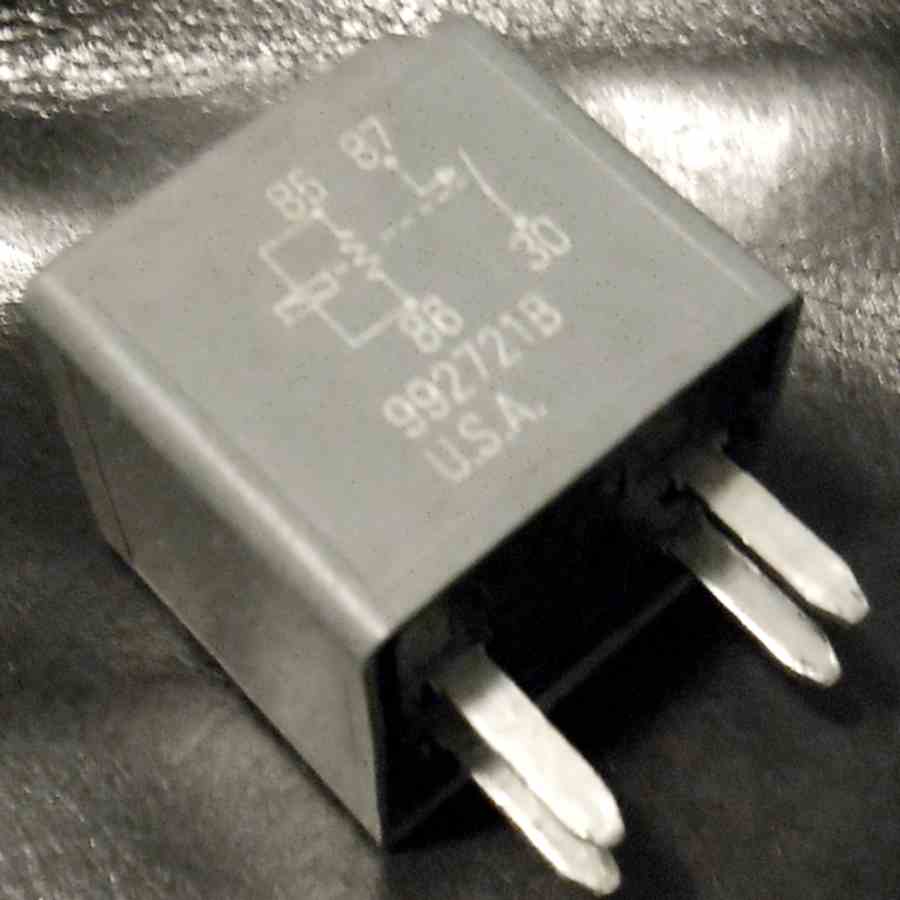Most modern cars have electrical relays which allow for cheaper (low power) switches to be used, and allow computers to be used without being burned up by the heat of the electricity passing through small computer circuits. Most relays look like cubes or rectangular prisms with varying (at least three) numbers of metal connectors on the bottom.

This relay has an electrical diagram printed on one side, and its part number (3604, not shown) printed on the top. Points 87 and 85 are the connections for the low power command circuit, which when supplied with power, activates the electromagnetic switch, connecting points 87 and 30.
If the full voltage flowed through modern switches, they would be burned out, and the vehicle's computer would have to be impractically large as well to cope with the voltage. Relays avoid this problem, allowing much more advanced vehicles to be produced, and makes many repairs both cheaper and easier.
Relays function in a way very similar to a switch, the only difference being they are only activated by other electrical activity.
Relays are more difficult to check for faults than fuses, since they are sealed up. Testing the relay by seeing if it makes a sound can tell you that it is bad for sure (no sound means the internal switching isn't happening), but damage can occur internally that lets a relay make a sound but not make an electrical connection.
Flasher Relay
A flasher relay is used to control the rate of turn signal flashing. It is a specific type of relay designed to turn on and off automatically.
Traditional Flashers: Thermal/Mechanical
Thermal/mechanical flashers use a bi-metallic strip to turn itself on and off. Running current through the strip causes the two metals to heat up and they both expand at different rates. Once hot enough, the strip will snap away, breaking the electrical connection heading to the flashing lights (such as turn signals or hazards) until the metals cool back down and snap back into place so the lights can illuminate. The amount of current (amperage) heading through the strip affects the speed of the on/off cycle.
Solid State Flashers
Solid state flashers do the same job as traditional flashers except it does so without a bi-metallic strip or any moving parts. Internal circuitry controls the on/off cycle speed based on more constant factors like voltage. Because of this, these flashers can be used in more demanding and unconventional set ups such as with LEDs or when towing a trailer with turn signals.
Video: All About Relays
Many relays can be found on modern vehicles, often in multiple locations. A relay acts as an electronically controlled switch, often controlled by a switch or sometimes another relay. The relay has a coil in it which creates a magnetic field when electricity flows through it.
This video is part of Cars Simplified: Season 5.
A Look at an Example
This is a look at a Factory Air (SMP) relay, part number 36017. It has a diagram of the internals printed on the back, four pins sticking out of an epoxy-sealed base, and can only be plugged in one way.
